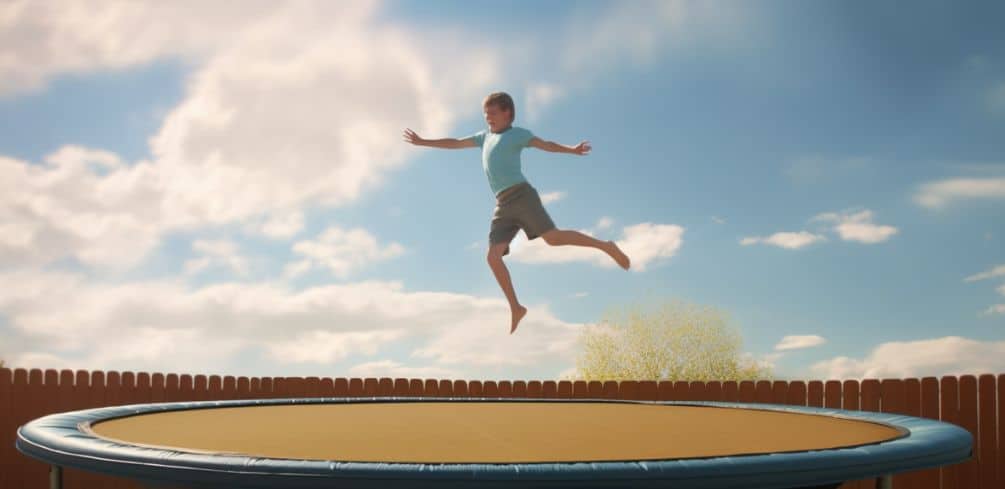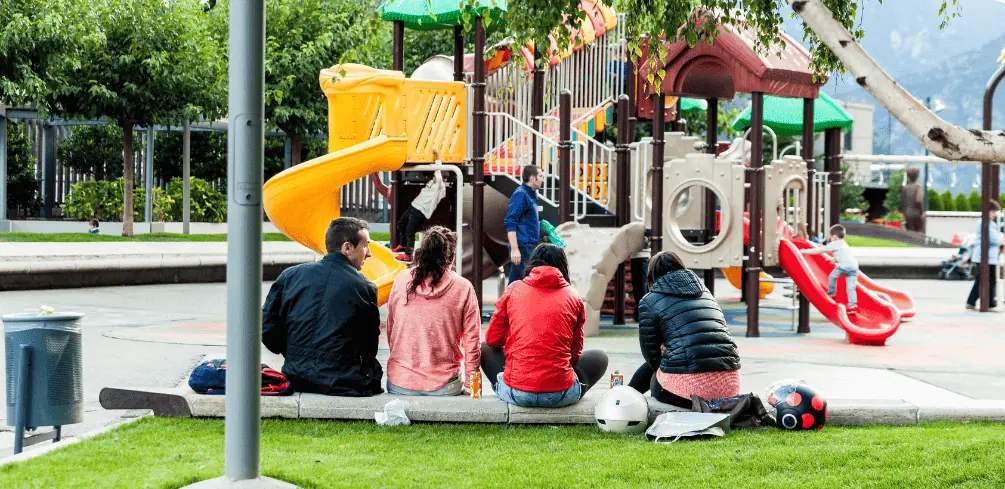As a trampoline enthusiast, I’ve often wondered if wearing shoes while jumping is the way to go. After all, we wear shoes for most physical activities to provide support, protection, and grip. So why not on a trampoline?
However, there’s more to consider when it comes to footwear and trampolining than meets the eye. With safety being of utmost importance in this exhilarating activity, it’s essential to take a deep dive into the pros and cons of wearing shoes on a trampoline and what alternatives are available.
Pros of Wearing Shoes on a Trampoline
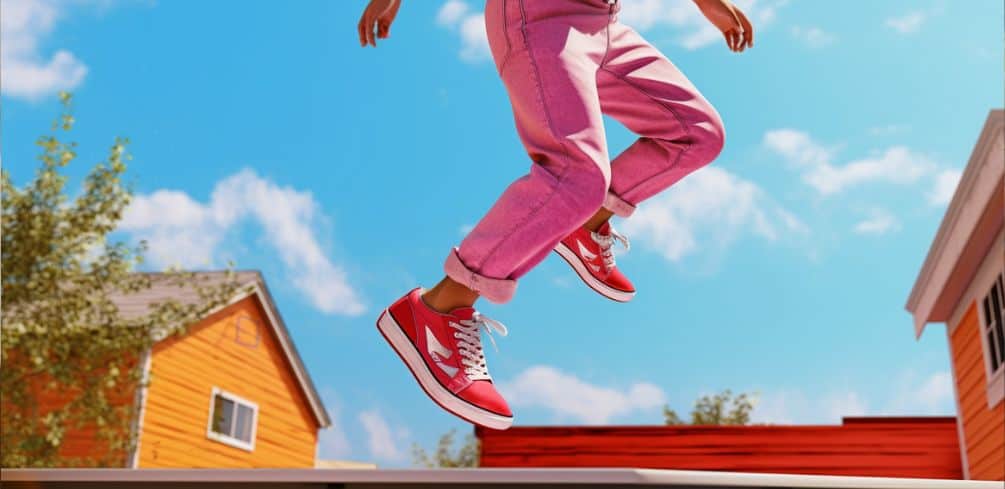
So, why’s it a good idea to wear shoes on a trampoline? Let’s dive right in and explore the perks!
One major advantage of wearing shoes while trampolining is improved grip. Shoes provide better traction on the trampoline surface than socks or bare feet, allowing you to jump higher and perform more advanced moves without slipping.
This is especially important for outdoor trampolining, where weather conditions such as rain, snow, or dew can make the jumping mat slippery.
Another reason to consider wearing shoes on a trampoline is injury prevention. The additional support provided by shoes can help protect your feet and ankles from strain or sprain during high-impact activities like jumping.
Furthermore, if you’re engaging in competitive trampolining or practicing advanced skills requiring precise footing and balance, enhancing performance due to proper footwear can significantly reduce the risk of accidents. Additionally, shock absorption from quality sneakers can alleviate stress on joints during those powerful jumps and flips.
Wearing shoes while using an outdoor trampoline also offers protection against potential hazards such as insects, sharp objects hidden in the grass around the perimeter of the trampoline, or even hot surfaces during sunny days. It’s always better to be safe than sorry when it comes to our health and well-being.
So next time you hop onto that bouncy surface, remember these benefits: improved grip for better control over your jumps, enhanced performance leading to fewer injuries, and added protection for your feet while enjoying some exhilarating outdoor fun!
Cons of Wearing Shoes on a Trampoline
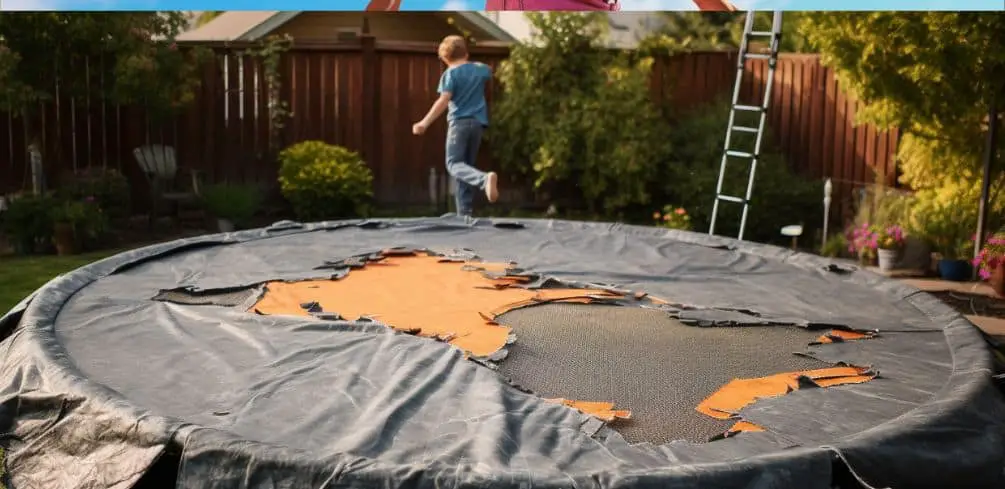
Believe it or not, there’re quite a few downsides to sporting your favorite sneakers while bouncing on that stretchy surface. Some of the most common issues include slippery soles, damaged fabric, harmful bacteria, reduced grip, and uneven jumping.
To give you a better understanding of these potential problems, let’s take a closer look at each one.
| Issue | Explanation |
|---|---|
| Slippery soles | Shoes can have slick surfaces that reduce traction and lead to slips and falls on the trampoline. |
| Damaged fabric | Sharp objects like shoe buckles or rough edges can cause tears in the trampoline’s delicate fabric. |
| Harmful bacteria | Wearing shoes on a trampoline may introduce dirt and bacteria from outside which can be unhygienic. |
| Reduced grip | The extra layer between your feet and the trampoline surface reduces grip, affecting balance & control. |
| Uneven jumping | Shoes may create an uneven weight distribution leading to unsteady jumps & increased risk of injury. |
When considering whether or not to wear shoes on a trampoline, it’s essential to weigh these disadvantages against any potential benefits you might gain from doing so (such as added support for your ankles).
It seems clear that wearing shoes poses various risks related to safety and hygiene; therefore, going barefoot or opting for specialized trampoline socks with non-slip grips would be preferable when enjoying some bouncy fun!
Our pack of 6 non-slip ankle socks for toddlers aged 1-3 years is perfect for parents prioritizing safety and comfort. These socks come in an assortment of colors, with grips that ensure stability while keeping tiny feet warm.
The socks are crafted with PRO ANTI-SKID technology, featuring eco-friendly rubber grippers for exceptional slip protection. Additionally, the smooth heel tab design eases the process of putting on and taking off, minimizing discomfort and blister risks.
Made from breathable, stretchy combed cotton, these socks fit snugly into shoes and offer confident mobility. Their comfort and elasticity allow for unrestricted movement, ensuring your toddler’s feet remain warm and cozy.
With an elastic around the ankle to prevent slipping off, these socks make an ideal choice for parents wanting to combine comfort, safety, and style in their toddler’s attire.
Safety Considerations for Trampoline Use
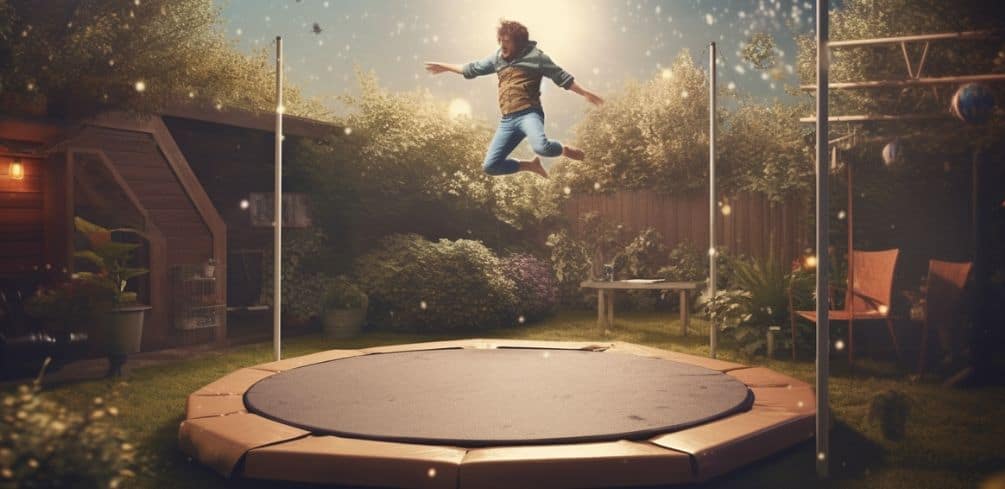
Safety’s always a top priority, especially when it comes to having fun on those bouncy contraptions from the future (a.k.a. trampolines). We’ve all heard about the numerous trampoline accidents due to improper use and lack of supervision.
To ensure everyone’s safety and enjoyment, paying close attention to a few key factors when using a trampoline is essential.
- Proper supervision: Whether it’s children or adults bouncing around, someone should always be present to keep an eye out for any risky behavior or potential hazards. This person should also enforce rules like one person jumping at a time and no flips without proper training.
- Safety gear importance: Using safety equipment such as a trampoline enclosure net, padding for springs and frame, and even wearing appropriate clothing can significantly reduce the risk of injuries.
- Trampoline maintenance: Regularly inspecting your trampoline for any wear and tear is crucial in ensuring its safe usage. Check for damaged springs, holes in the mat, or rusted metal parts – these should be replaced or repaired promptly.
- Age restrictions: Trampolines might not be suitable for very young children as they are still developing their balance and coordination skills, thus, increasing their risk of injury while bouncing.
As we continue our quest to achieve maximum fun without compromising safety on our beloved bounce machines, let’s not forget that taking simple precautions can make all the difference between an enjoyable experience and a disastrous one.
By focusing on proper supervision, recognizing the importance of safety gear, performing regular trampoline maintenance checks, and adhering to age restrictions guidelines – we can prevent many accidents related to trampoline use while allowing everyone else to jump into the air with confidence!
Choosing the Right Footwear for Trampolining
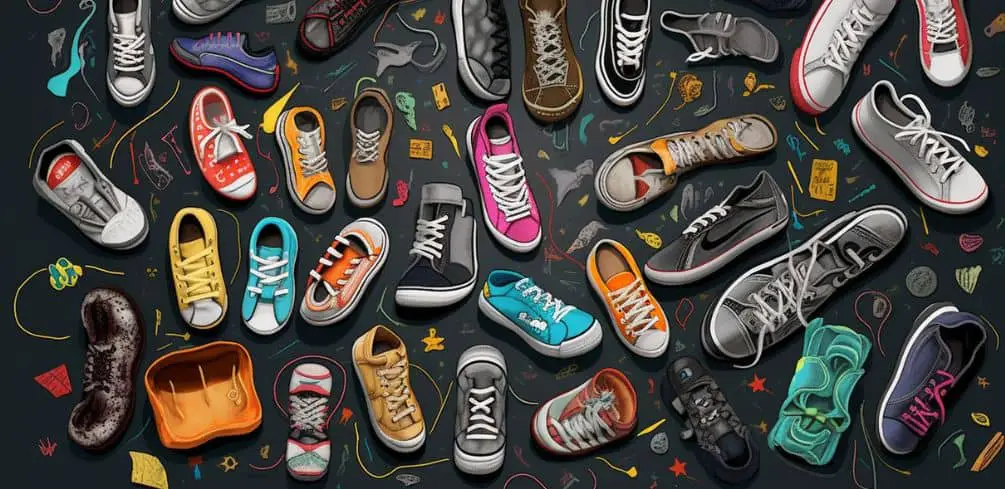
Selecting the appropriate footwear for trampolining might seem like a trivial detail, but it’s actually a crucial factor that can significantly impact both your safety and performance while bouncing high in the sky.
The right choice of footwear can help with injury prevention, provide arch support, and maintain foot hygiene. One popular option among trampoline enthusiasts is trampoline socks, which are designed specifically for use on trampolines and offer grip-enhancing features to keep you stable during your jumps.
Here’s a comparison table to give you an idea of what to look for when choosing footwear for trampolining:
| Feature | Trampoline Socks | Regular Socks | Barefoot | Shoes |
|---|---|---|---|---|
| Grip | High (with rubber grips) | Low | Medium | Varies |
| Arch Support | Varies | Varies | None | High (depends on shoe type) |
| Foot Hygiene | Good (if washed regularly) | Good | Poor (sweating leads to odor)_ | Poor |
| Injury Prevention | High (due to grip) | Low (slipping risk) | -Medium | -Varies |
As seen in the table above, trampoline socks provide excellent grip due to their rubber grips on the soles, making them ideal for injury prevention. Additionally, they offer better foot hygiene compared to going barefoot or wearing shoes if washed regularly. However, arch support may vary depending on the specific brand or design of the sock.
When selecting your footwear for trampolining adventures, remember that safety should always come first. Opting for grip-enhancing footwear like trampoline socks can make all the difference in preventing slips and falls while ensuring proper foot hygiene.
Remember that although some people choose to wear shoes on a trampoline, this can cause damage to the trampoline surface and may not be allowed at certain trampoline parks or facilities.
Investing in proper footwear designed for trampolining will help you enjoy your bouncing experience while staying safe and comfortable.
Alternatives to Wearing Shoes on a Trampoline
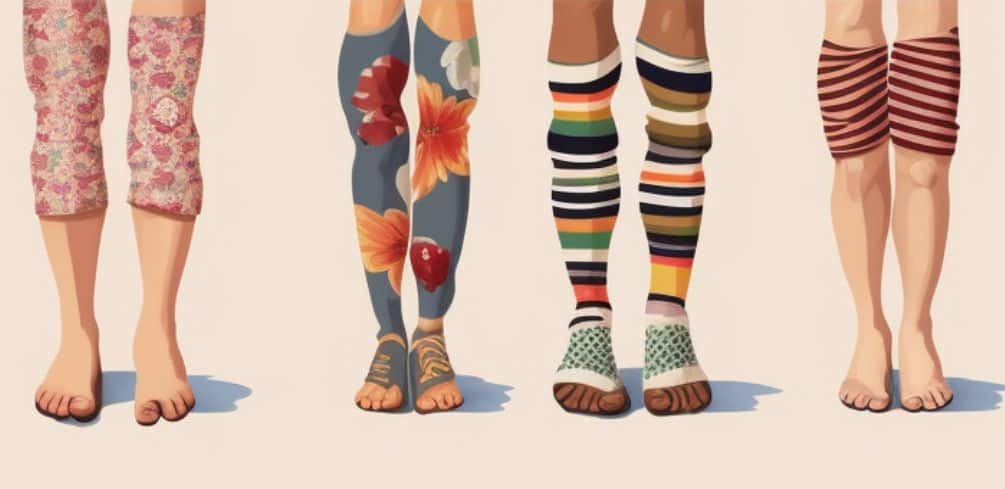
Bouncing high without the constraints of traditional footwear might seem liberating, but it’s important to find alternatives that’ll keep your feet safe and secure during those exhilarating trampoline sessions.
The options available include grip socks benefits, barefoot jumping, specialized trampoline shoes, DIY footwear adaptations, and indoor trampoline park policies. No matter which alternative you choose, safety should always be a top priority.
- Grip Socks Benefits: These non-slip socks provide extra traction on the trampoline surface to prevent slipping while jumping. They’re made with special grips on the bottom that help improve stability and protect your feet from any potential injuries.
- Barefoot Jumping: Some people prefer to jump barefoot for a more natural experience or because they feel more connected to the trampoline surface. However, it’s essential to ensure proper hygiene by cleaning your feet before and after using the trampoline.
- Specialized Trampoline Shoes: These specifically designed shoes offer excellent grip on the mat and can be helpful for advanced jumps and tricks where additional foot support is needed.
When visiting an indoor trampoline park, it’s crucial to be aware of their specific policies regarding footwear, as each facility may have different rules in place. Some parks may require grip socks or specialized shoes, while others may allow barefoot jumping; always check beforehand to avoid any surprises upon arrival.
If you’re planning on using your own trampoline at home or in a private setting, consider exploring DIY footwear adaptations like applying anti-slip strips or rubber soles onto regular socks or even creating homemade grips using materials like silicone caulking for added safety without breaking the bank.
Whichever option you decide upon, there’s no denying that ensuring optimal foot protection is key for an enjoyable and injury-free bouncing experience!
Conclusion
In conclusion, I’ve found that wearing shoes on a trampoline has its pros and cons. For me, it all depends on the type of shoes and activities I’m planning to do while bouncing away.
Ultimately, safety comes first when it comes to trampolining. So, whether I decide to wear shoes or go barefoot, I’ll make sure to always follow proper guidelines and choose the right footwear (or lack thereof) for an enjoyable and safe experience.

